Skoda set up shop in 1895 and built its first car in 1905, but it would be more than a century before the Czechoslovakian brand built its first SUV. That was the seven-seater Kodiaq which arrived in 2016, and since then the Volkswagen subsidiary has launched two smaller SUVs, the Karoq and the Kamiq, in 2017 and 2019 respectively.
The Kamiq is the smaller of the two and the Karoq that we're looking at here is the size of a Volkswagen Golf, so it's in the middle of Skoda's three-model SUV range. Effectively taking over where the Yeti left off, the Karoq brought more of an overt SUV look, and while it doesn't have quite the charm or distinctiveness of its predecessor, there's still plenty to love about this mid-sized crossover.
Models covered
- Skoda Karoq (2017-date) – The Mk1 Skoda Karoq offers plenty of space and low running costs.
History
The Skoda Karoq went on sale in the UK in October 2017, priced from £20,875. At the outset there was a choice of 1.0-litre TSI and 1.5-litre TSI petrol engines, in manual or DSG auto forms, while diesel fans could choose between 1.6-litre TDI and 2.0-litre TDI power plants. Again, these came in manual or automatic forms, with all 2.0-litre TDI models getting four-wheel drive as standard; the 1.5-litre TSI was the only other engine that came with a 4x4 option.
The 187bhp 2.0-litre TSI engine that joined the range in March 2019 came in four-wheel-drive and DSG auto form only. The launch trim line-up was SE, SE L and Edition, with SportLine and Scout added in late 2018; the latter got standard four-wheel drive and more distinctive off-roader-type styling. An SE Drive model was then added in spring 2020, based on the SE but with improved infotainment and 17-inch alloys.
Which one should I buy?
All of the Karoq's engines and transmissions are great to use and efficient, so there's no need to avoid any particular derivative. Buy a Karoq with four-wheel drive and you'll pay a 5mpg or so fuel consumption penalty for the privilege, so a decent set of winter tyres might be a better option.
All Karoqs are well equipped, with even the entry-level SE coming with electrically adjustable, heated and auto-dimming power-folding door mirrors. Also fitted is privacy glass, a DAB radio, Bluetooth, dual-zone climate control, rear parking sensors, automatic headlights and wipers, 17-inch alloy wheels plus cruise control.
The SE Nav Plus adds navigation, adaptive cruise control and front parking sensors, while the SE L gets 18-inch alloys, LED headlights, heated front seats and a rear-view camera. The SportLine gets a panoramic roof, 19-inch wheels and an electric tailgate.
Alternatives to the Skoda Karoq
The Karoq's closest rival is the SEAT Ateca, which is pretty much the same car but with different badges, while the Volkswagen Tiguan is also closely related. As a result they all have the same efficient engines and transmissions, decent build quality and impressive user-friendliness. Just as desirable as the VW Group trio is the Mazda CX-5, which is great to drive, has an upmarket interior, plus it looks good too.
If value is a key decider for you, check out the Ford Kuga, along with the Kia Sportage and Hyundai Tucson, while the Peugeot 3008's interior design and quality are both impressive. The Nissan Qashqai Mk2 majors on useability and it's comfortable, but it hasn't proved to be as reliable as you might expect – traits shared by the Renault Kadjar.
What to look for
Spare wheel
No spare wheel is supplied. Instead there's a 'tyre mobility kit' which may or may not keep you mobile.
Cylinder deactivation
To cut fuel consumption, the 1.5-litre TSI engine's Active Cylinder Technology lets it run on two cylinders.
Seats
The Vario Flex seats (standard on SE L/Edition, optional on SE/SE Drive) massively improve versatility.
Batteries
Some early Karoqs featured substandard batteries, but these should have been replaced by now.
Engine juddering
The 1.5-litre TSI engine can suffer from juddering as the car moves off; a software update is available.
Filler cap
Some owners have had problems opening the fuel filler flap; adjusting the release mechanism can help.
Key fob
The key fob batteries die with no warning on cars with keyless go; annual battery changes are the answer.
Interior
There's plenty of space for five, although three large adults in the back will find things cramped on a long journey. The fit and finish is impressive and so is the user-friendliness of the dash, but it's worth buying further up the range if you can afford it, as the quality of the materials (and hence the ambience) improves noticeably. Boot space is good (but behind the class best) at 521 litres with the seats up, which rises to 1,605 litres with them folded.
Prices
Check out the latest used prices for the Skoda Karoq on our sister site Buyacar.
Running costs
Karoq owners can choose between fixed and flexible maintenance regimes, with the former set at every 12 months or 10,000 miles, while the latter doubles this to two years or 20,000 miles. An oil and filter change costs £119; this is due every year on the fixed scheme and every other year with the flexible option.
A £184 Interim service is due every year whichever scheme is selected, and Skoda dealers also offer a £59 Extended Scope option which is a series of checks of the car's major functions. The brake fluid should be replaced after three years then every two years, at £60, and all Karoq engines have a cam belt which should be replaced every five years at £449 for diesels and £479 for petrols. There's no mileage limit on the petrol engine's cam belt but the diesel has a 130,000-mile cap.
Recalls
The Karoq has been recalled six times, the first in January 2018 because of faulty A-pillar trim which could come adrift in sub-zero temperatures, leaving passengers vulnerable in an impact that set off the airbags.
The next campaign came in November 2018 because the electronic parking brake could release when it wasn't supposed to; a month later there was another recall, this time because of faulty rear seat headrests; this same problem led to the next recall which was issued in March 2019.
The most recent action was in September 2019 because faulty engine software could lead to the engine stalling at low speeds because of insufficient torque being available. Two months earlier Skoda had issued a recall because of faulty seat frames, which could crack because of a manufacturing glitch.
Driver Power owner satisfaction
A 15th place (out of 75) in the 2020 Driver Power new car survey is something to be celebrated, but even more impressive is a fifth place (out of 30) in the same year's Brands survey. Helping the Karoq achieve that 15th place was a big thumbs up for the interior design and the car's overall practicality, along with the excellent build quality, low running costs and impressive infotainment. The key downsides are the noisy engines which aren't as frugal as expected.
Verdict
The Karoq is everything you'd expect of a Skoda: handsome, decent value, solidly constructed, well equipped and good (if not especially exciting) to drive. Skoda buyers are attracted to the brand for practical reasons such as low running costs and ease of ownership, but that doesn't mean Karoq buyers have to settle for second best when it comes to efficient engines or the latest infotainment systems; being part of the enormous Volkswagen Group brings access to all of this latest tech, but you don't have to dig too deep to be able to access it. Of course, the Karoq isn't perfect, but a string of impressive showings in our annual Driver Power survey proves that if you're looking for a safe place to put your money, this compact SUV might well be it.
from Sitewide RSS feed https://bit.ly/3mCvV8J

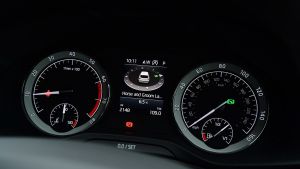
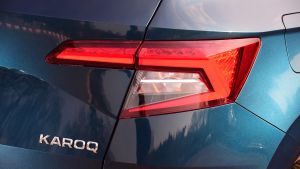
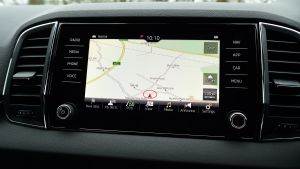
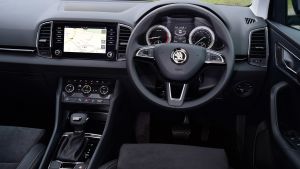
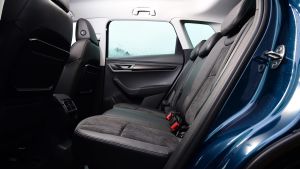
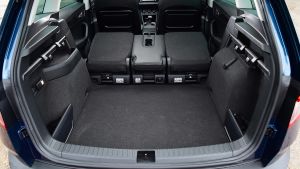
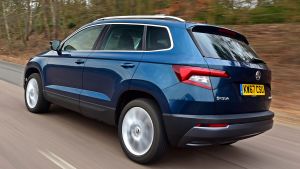
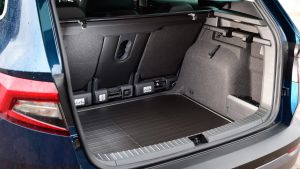
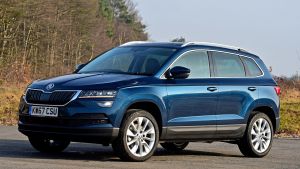
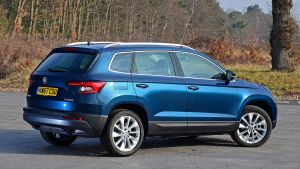
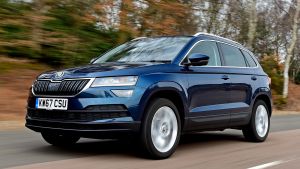
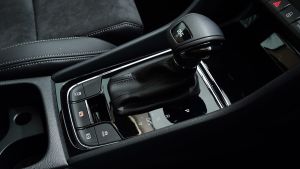
Comments
Post a Comment